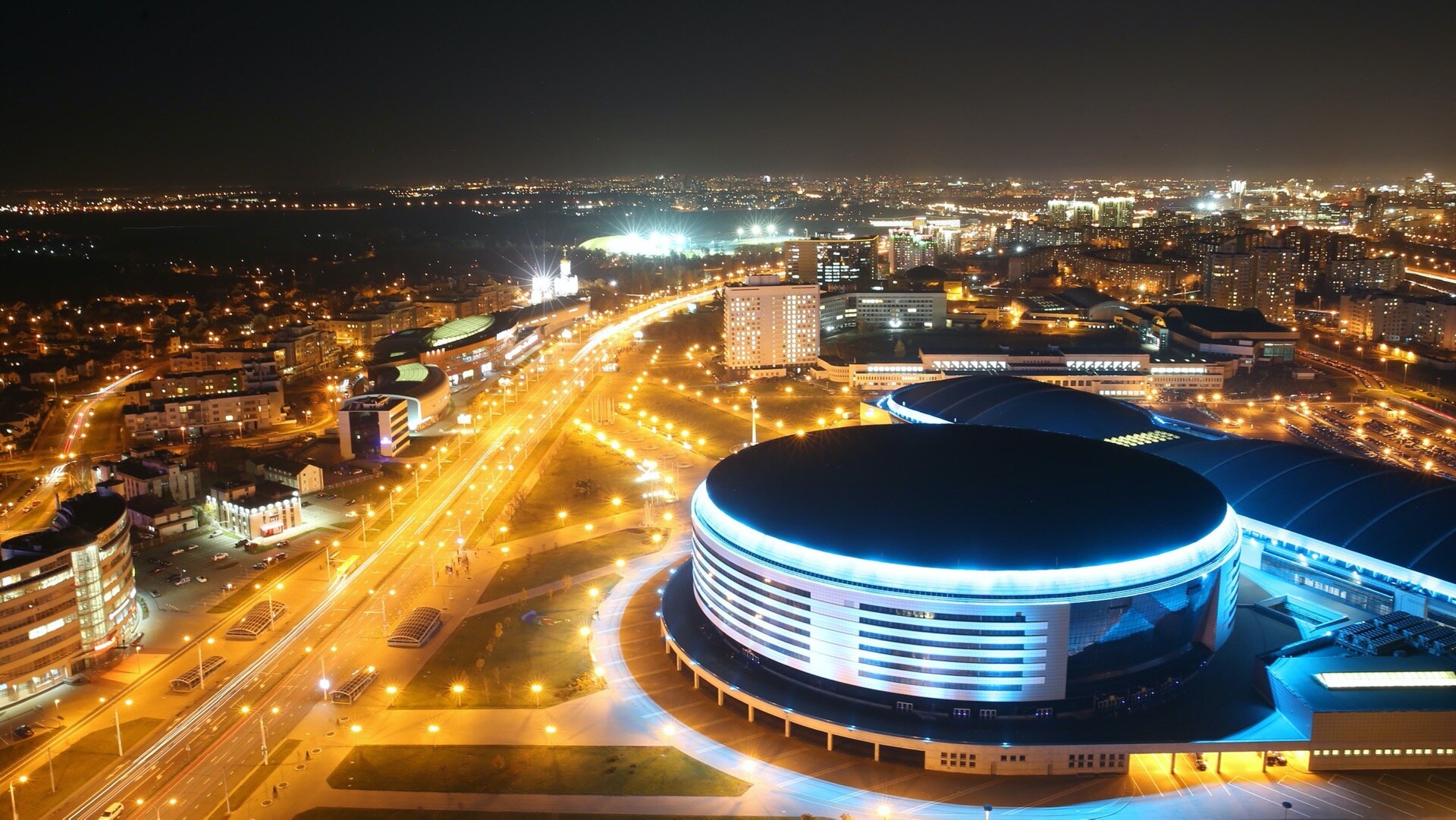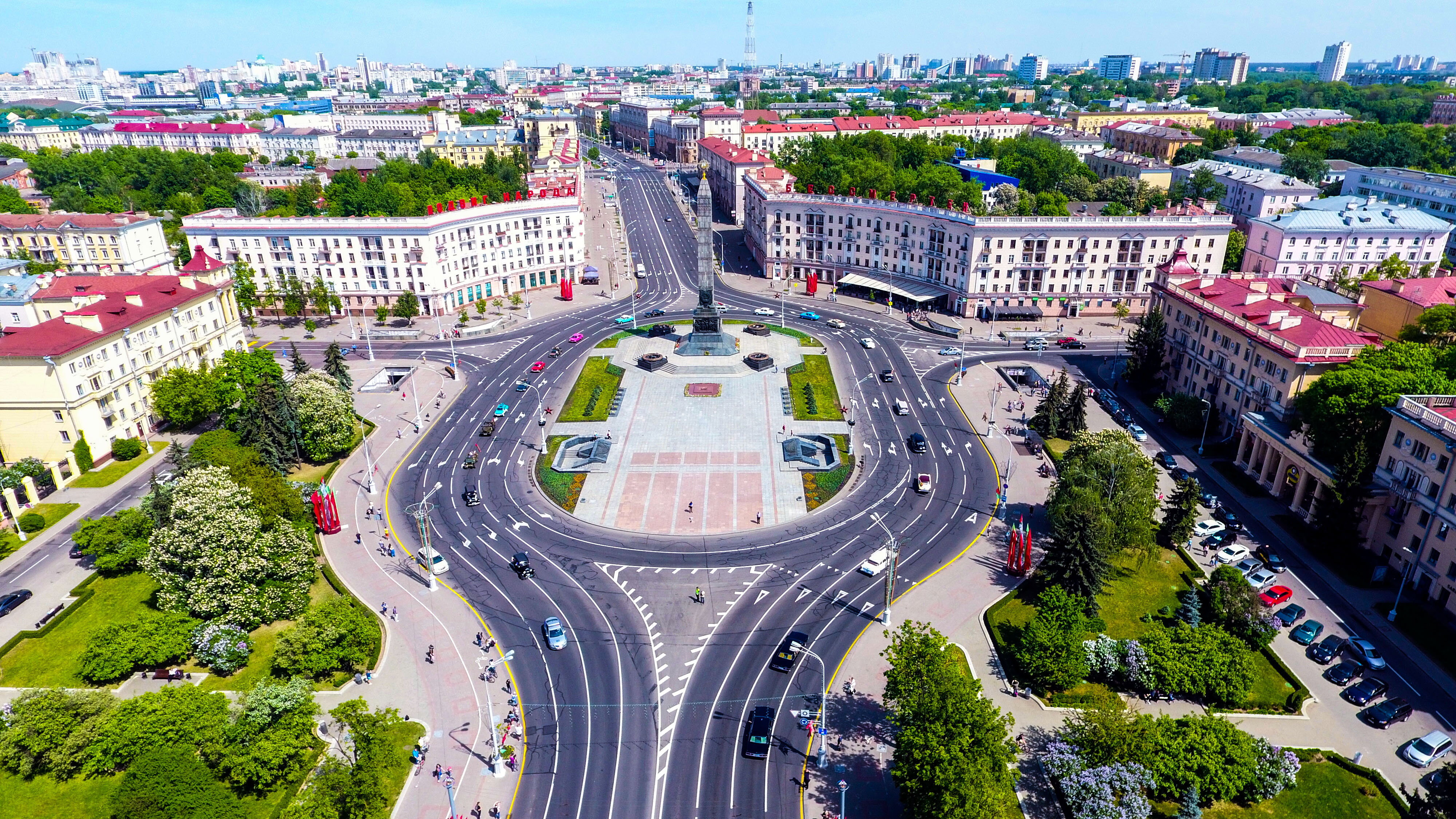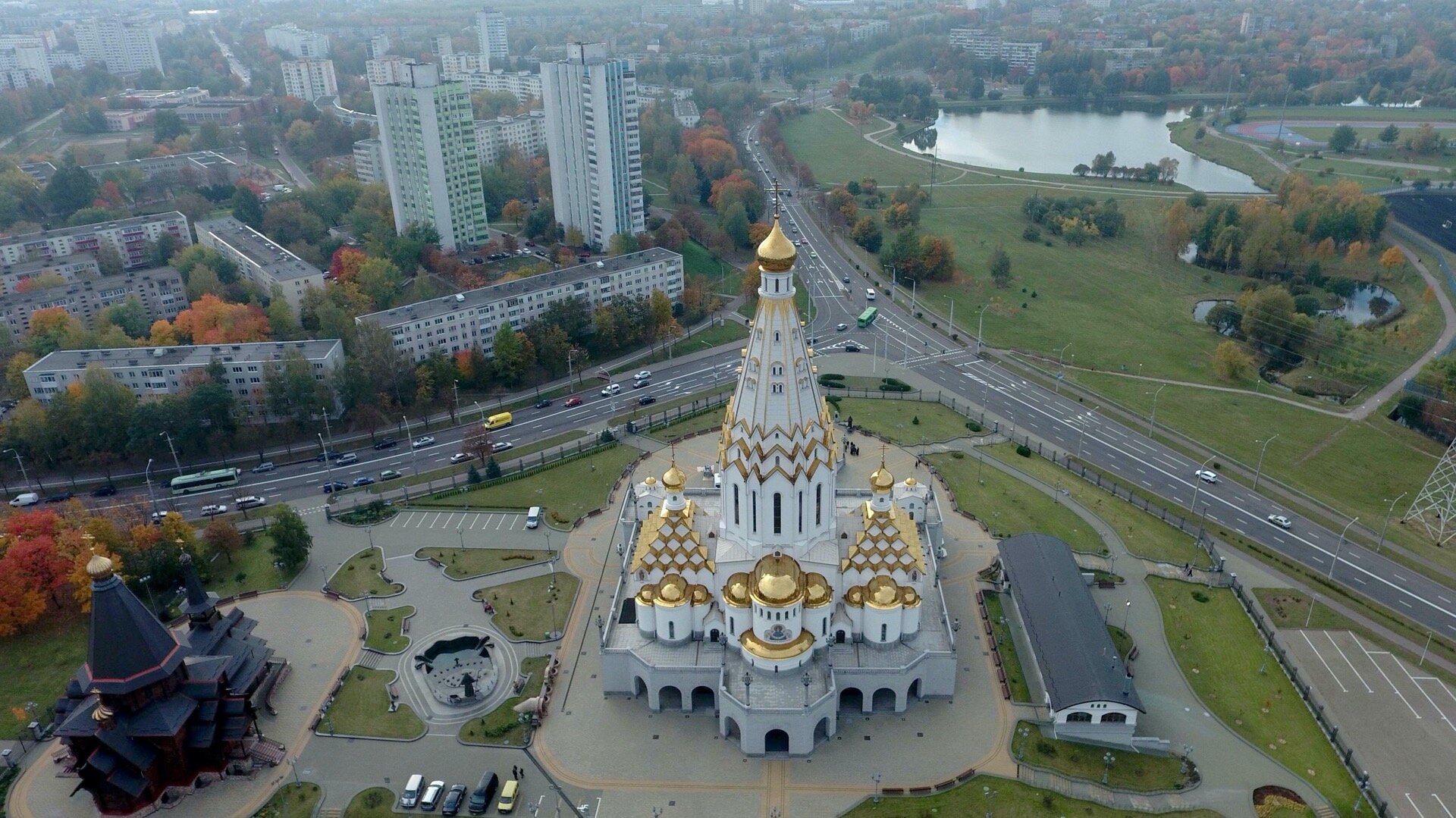Minsk
History, interesting facts

Minsk is one of the oldest cities in Europe. The capital-to-be of the Republic of Belarus was first mentioned in the historical chronicle in 1067. At that time, Grand Princes of Kiev Iziaslav, Svyatoslav and Vsevolod, the grandsons of Princess Rogneda of Polotsk, the sons of Yaroslav the Wise, joined their forces and attacked the city of Menesk to retaliate for the campaign of Prince Vseslav of Polotsk, who besieged Pskov in 1065. They seized the fortress of Menesk and defeated Vseslav's army in the memorable Battle of Nemiga described in the Tale of Igor's Campaign.
One thousand years later, the city turned into one of the internationally recognized peace brokering centers of the 21st century. More than once Minsk was razed to the ground, and more than once it rose from the ashes. The city knows the value of peace and quiet life like no other one. Minsk is the only city in Belarus that was awarded, in 1974, the Hero City title in recognition of the contribution of its residents to the fight against the Nazi invaders during the Great Patriotic War.
Minsk houses most important institutions of the country: the Palace of Independence – the residence of the President of the Republic of Belarus, the Administration of the President of the Republic of Belarus, the National Assembly and the Council of Ministers, the National Bank of the Republic of Belarus.
The Commonwealth of Independent States is headquartered in Minsk. The diplomatic corps, consulates, and representative offices of international organizations are also based here.
Minsk is home to the National Academy of Sciences of the Republic of Belarus (est. on 1 January 1929), the High-Tech Park and the country's largest education institutions. Minsk is the only city in Belarus that has metro service that was launched in 1984.
Minsk has its own Charter, coat of arms and anthem.
Minsk celebrates the City Day every year on the second Saturday of September.
Geography
The country's largest city is located on the south-eastern slope of the Minsk Hills. Total area of the Belarusian capital is 348,84 km2.
Geographical coordinates of Minsk are as follows: 53°53'59"N and 27°34'00"E.
The altitude above sea level is 222m.
The relief of Minsk is diverse: the terrain is rather hilly, the difference in elevation within the city limits makes up about 100m.
The Belarusian capital is literally the center of the country. This administrative, economic, scientific and cultural hub is located just 70km away from the geographical center of Belarus.
Administrative and territorial division
Minsk is divided into 9 administrative districts: Tsentralny, Sovetsky, Pervomaysky, Partizansky, Zavodskoy, Leninsky, Oktyabrsky, Moskovsky, Frunzensky.
Population
As of 1 January 2025, the population of Minsk was 1,996,730, which accounted for 21.9% of the country’s population.
Economy
Minsk is a major industrial center. The city contributes more than a quarter to the national GDP. Minsk’s industrial sector features companies and enterprises producing machinery and equipment, food beverages and tobacco products, electrical equipment, vehicles, construction materials, and pharmaceuticals.
There are over 5,000 industrial companies in Minsk. The city is home to the most well-known Belarusian brands: Minsk Tractor Works (MTZ), Minsk Automobile Plant (MAZ), Minsk Wheel Tractor Plant (MZKT), Minsk Motor Plant (MMZ), Amkodor, Management Company of the Belkommunmash Holding Company, Minsk Refrigerator Plant, Integral Plant and many others.
Minsk companies maintain foreign trade relations with 180 countries. Minsk accounts for about 33.2% of Belarus’ foreign trade.
The free economic zone Minsk plays a significant role. Some of its facilities are located in Minsk Oblast.
Natural and mineral resources
There are eight main watercourses within the city limits: the Svisloch River, the city's main waterway, the rivers Tsna, Loshitsa, Myshka, Trostyanka, Kachinka, and Senitsa, and the Slepyanskaya water system.
There are ten main water reservoirs within the city's borders: Komsomolskoye Lake, Chizhovskoye reservoir (CHP-3 pond), Tsnyanskoye reservoir, Drozdy water reserve, Lebyazhy pond, CHP-2 pond, Kurasovshchina reservoir, pond in the lower reaches of the Loshitsa River, the pond of Semashko-Karolinskaya street area and the pond in Goretsky street area.
Sport and tourism
The city of Minsk is famous for its sports traditions and Olympic achievements.
Minsk is proud of its Olympic champions: Alexander Medved (freestyle wrestling, 1964, 1968, 1972), Elena Belova (fencing, 1968, 1972, 1976), Alexander Gazov (shooting, 1976), Alexander Portnov (platform diving, 1980), Nikolai Alyokhin (fencing, 1980), Sergei Bulygin (biathlon, 1984), Alexander Karshakevich (handball, 1988), Tatyana Ledovskaya (athletics, 1988), Dmitry Dovgalenok (canoe sprint, 1992), Ellina Zvereva (athletics, 2000), Vadzim Makhneu (canoe sprint, 2008), Victoria Azarenka (tennis, 2012), Max Mirny (tennis, 2012), Daria Domracheva (biathlon, 2014, 2018), Anton Kushnir (aerials, 2014), Hanna Huskova (aerials, 2018), Nadezhda Skardino (biathlon, 2018).
There are 3,937 sports facilities in Minsk: stadiums and sports grounds, swimming pools, tennis courts, a roller-ski track, etc. The largest sports complexes are the Dinamo National Olympic Stadium, the Palace of Sports, the tennis center, the indoor football arena, the ice palace, Minsk Arena and Chizhovka Arena and the Freestyle sports center.
A world-class swimming pool was opened in 2024, the National Football Stadium was inaugurated in 2025.
The biggest mass sports events in Minsk are the traditional Olympic Day, Minsk Triathlon, half marathon.
There are 76 hotels in the capital.
Culture and major sights

Minsk was destroyed beyond recognition during the Great Patriotic War. Yet, the city bounced back, rebuilt from the ground up, and turned into a beautiful European city. Today the State List of Historical and Cultural Heritage of the Republic of Belarus displays 385 objects from Minsk, including the historical center, 328 architectural monuments, 6 archaeological sites, 18 historical monuments and 31 monuments of art.
Tourists are always interested in Minsk fortified settlement (an archaeological site of the 11th-20th centuries) and the architectural complex Pishchala Castle (est. 1825).
The buildings along the city's thoroughfare – Independence Avenue, from Independence Square to Masherov Avenue – form a unique 20th century architectural ensemble embodying the principles of classical art of urban planning.
The main landmarks of the Belarusian capital are the Victory Monument in the Victory Square, the white Town Hall in Svobody Square, the National Library of Belarus, cosy Trinity Suburb, Holy Spirit Cathedral and the Catholic Cathedral of Saint Virgin Mary, Sts Simon and Helena Church (also known as the Red Church), All Saints Memorial Church in memory of war victims and heroes who saved our Homeland, the National Academic Bolshoi Opera and Ballet Theater of the Republic of Belarus. The Minsk Gate, the twin tower buildings in the Railway Station square, is the first sight that guests of the capital see when they arrive in the city by train.
Minsk has the Botanical Garden, which is one of the largest in Europe both by area (93 hectares in Minsk and 44 hectares in Gantsevichi, Brest Oblast), and by the collection (more than 15,000 plant species). In terms of area, it is comparable only with the Royal Botanic Gardens in London. The Garden's collection includes 280 rare and endangered species of the Belarusian flora.
Minsk values and honors its history. Victory Square is one of the most majestic and solemn squares of the Belarusian capital. It was first established in pre-war 1939. By the 10th anniversary of the liberation of Belarus from the Nazi invaders, it was decorated with a magnificent monument commemorating the courage and selflessness of all soldiers and partisan fighters. On 3 July 1961, the Eternal Flame was lit at the foot of the monument. Belarusians, foreign leaders, and dignitaries from different countries come to pay tribute to the fallen. In the 21st century, on the instruction of the President of the Republic of Belarus, a memorial complex Trostenets was set up on the site of one of the largest places of mass extermination of civilian population by the Nazis. This memorial is of international significance.
Minsk has numerous places of national memory and memorials: the architectural and sculptural complex Minsk Hero City; Minsk Military Cemetery (1914-1918); Yama (Pit) Memorial in Melnikaite Street dedicated to the Holocaust victims (the Nazis shot about 5,000 prisoners of Minsk Ghetto in this place on 2 March 1942); Masyukovshchina memorial complex with the mass graves of Soviet POWs and civilians (part of the territory of the Nazi Stalag No. 352 where over 80,000 people were killed); the monument to soldiers-internationalists on the Isle of Courage and Sorrow, and many others.
In the 21st century, thanks to its peaceful principles, Minsk has repeatedly hosted international events. In February 2015, the Palace of Independence hosted the 15-hour Normandy Four talks to settle the crisis in Ukraine involving the leaders of Russia, Ukraine, Germany and France. The Belarusian capital regularly hosts meetings of the Trilateral Contact Group on Ukraine.
In addition to the unique architectural heritage, the country’s main city has a special atmosphere of hospitality and holiday. The center of Minsk hosts concerts, exhibitions, historical re-enactments and other cultural events. Every May the city opens the season of summer music and tourism. Thematic creative projects like the interactive events of military and historical re-enactment, jazz and classical music evenings have gained great popularity.
The center of Minsk is the venue of festivals of national cultures. The festival season kicks off in May with the national festival and fair Viasnovy Buket (Spring Flower Bouquet) that gathers folk artists from all regions of Belarus.
Every year the capital of Belarus hosts large-scale cultural events, including the international festival of historical re-enactment Minsk Starazhytny (Ancient Minsk), the International Yuri Bashmet Festival, the International Film Festival Listapad, the International Festival of Circus Art, and various international art projects.
Religion

The Republic of Belarus respects the freedom of faith and religion as an inalienable right of its citizens, which translates into the country's great variety of religious denominations. Christianity is the most widely-spread religion in Belarus. The largest Christian communities in Minsk are Orthodox, Catholic and Protestant ones. Judaism and Islam prevail among other religious denominations. There are 22 religious denominations in Minsk, including 158 religious communities.